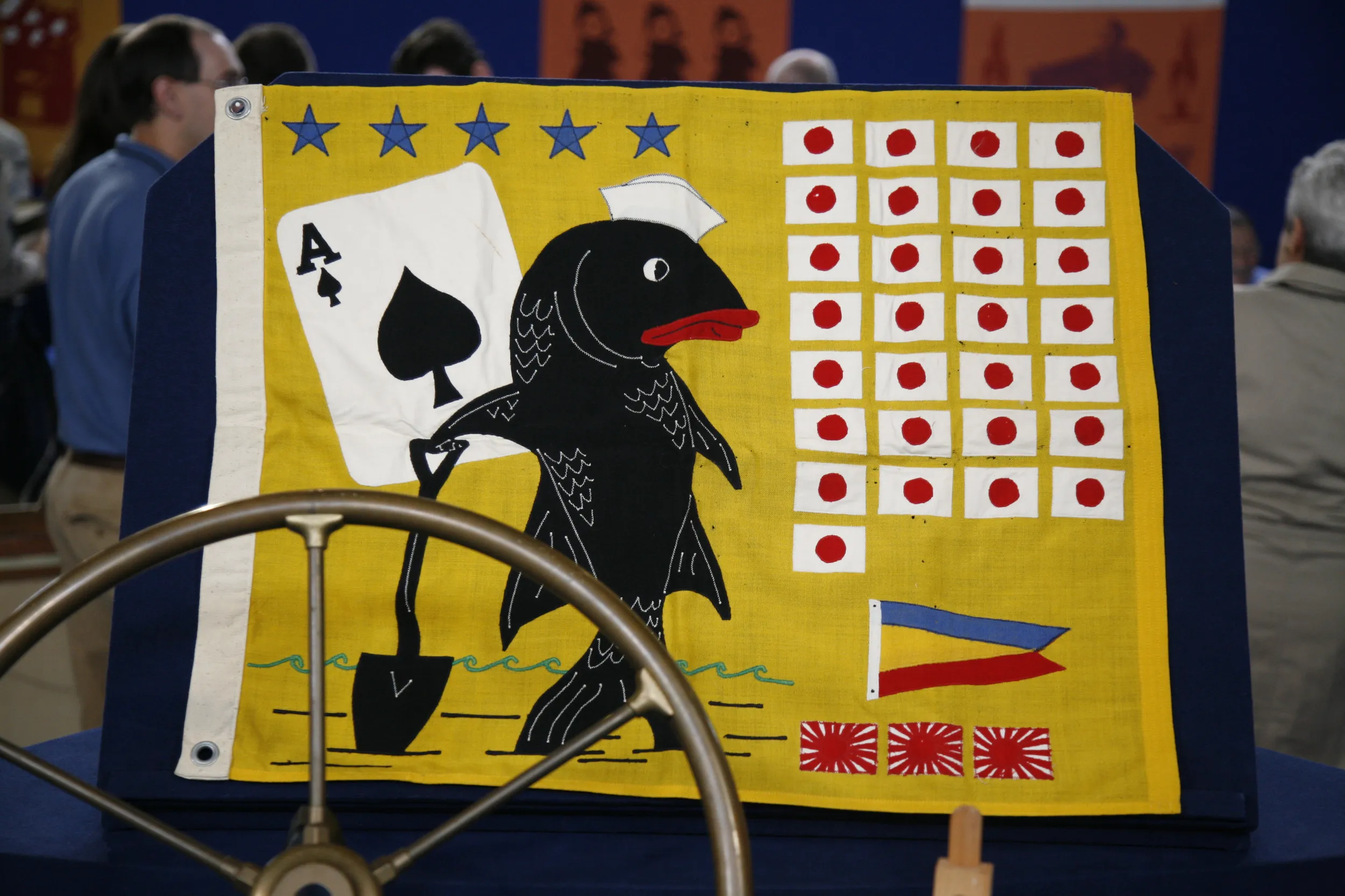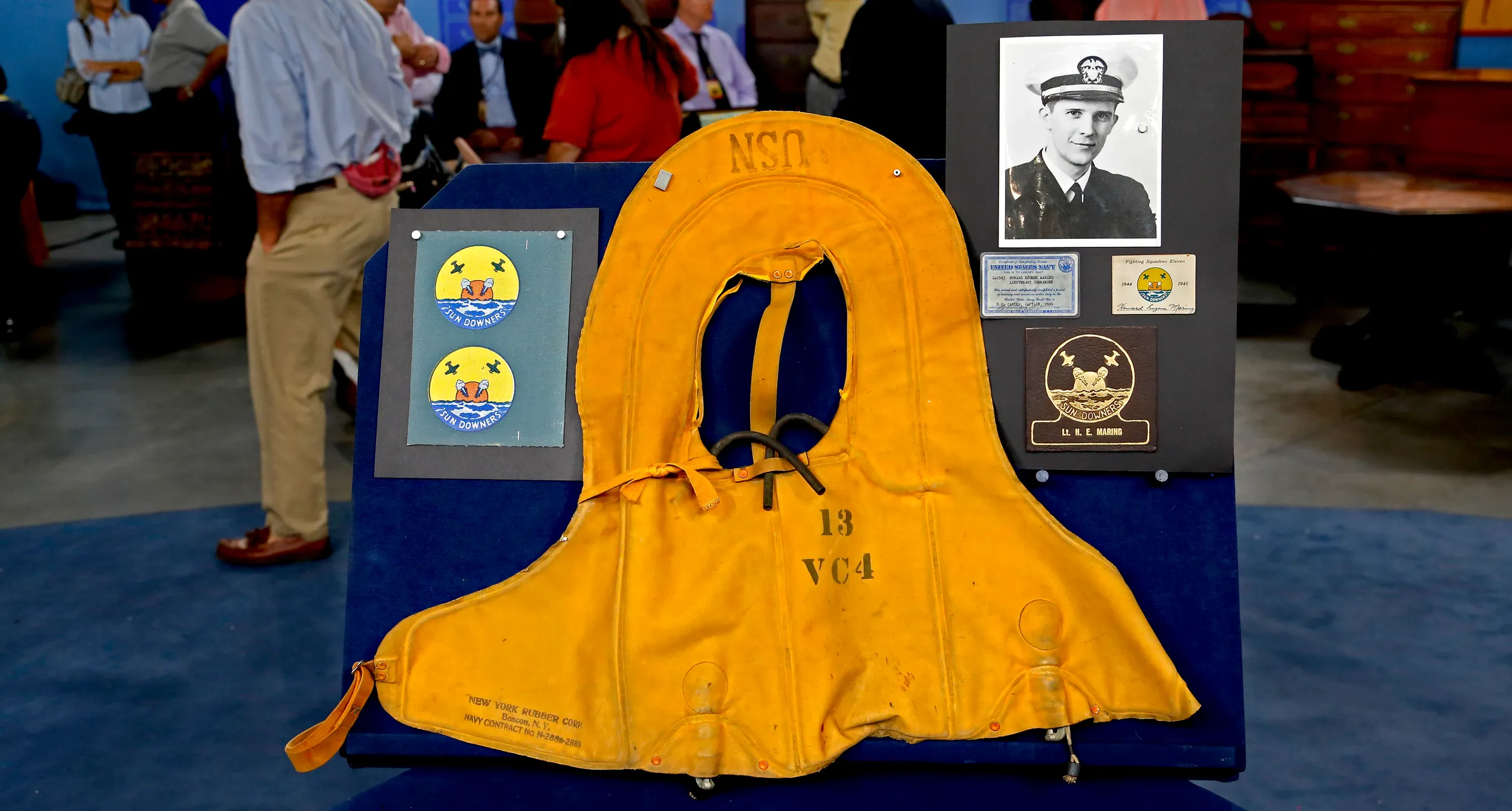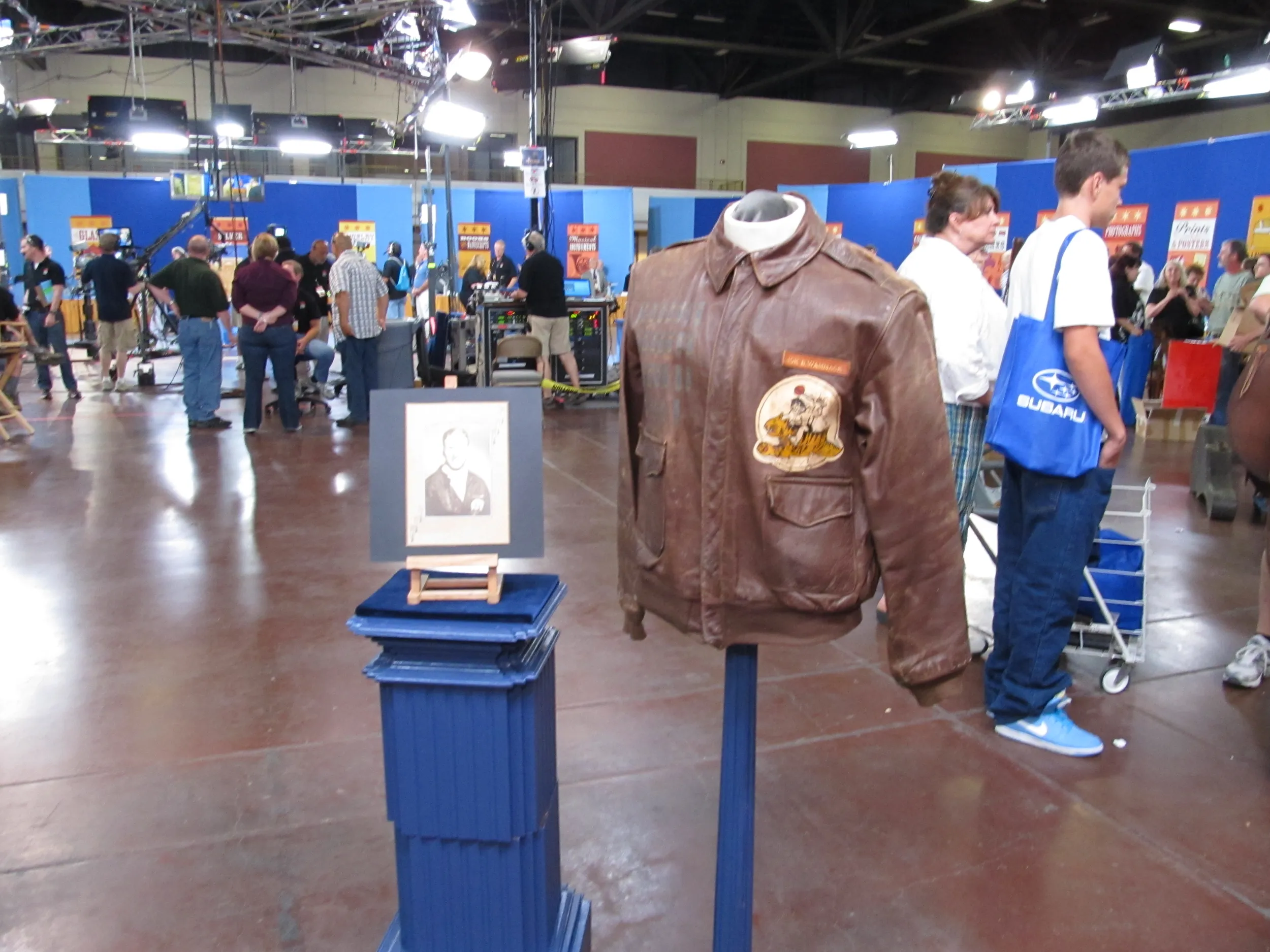GUEST: These are my dad's from World War II. And as you can see, he flew lighter-than-air. These are some photographs. This is actually a piece of the
blimp skin with his name on it. His wings, his dog tags, orders, and his flight log.
APPRAISER: It's a really interesting group. Let's take a look at his orders. Here it says "Blimp Headquarters, Squadron ONE." And the U.S. Navy was in charge of all lighter-than-air non-rigid airships. The Navy at around World War II had about 200 of these. They didn't perform a huge role, but the U.S. was really the only power to use non-rigid airships in service during World War II. They were used for air and sea rescue, scouting, mine sweeping and aerial photography. They were also used for escorting convoys in the ocean. Of the 89,000 or so ships that these airships escorted, not one was sunk.
An airplane could be in the air for maybe 12 hours, but an airship could be in the air for 60 hours at a time. So it meant it could do a lot of duty,
especially for scouting and minesweeping. And we can take a look at the flight log. We see that your father flew on a number of different ships--the K-82, the K-92, and that he was on minesweeping duty and air and sea rescue. So he was doing some heavy duty around the coast to protect it. What's great about this is in terms of completeness of a group, you have his flight log, orders that list the blimp headquarters, and then you actually have some period photographs. And these are Navy press photographs. Is this your father here?
GUEST: Yes, sir.
APPRAISER: It's really unusual to have a Navy press photograph with a family member in it, because generally you just have snapshots. But these were issued by the Navy for publication to promote the service. And here's a great image of your father and a fellow sailor doing some repair work on the surface of a ship. Here's another one near the monument for the Wright brothers. And then we have your father's dog tags. And these wings here would have been issued to all air crew member, you know, versus pilots. The pilots and air crew had two different kinds of wings, and this one had places on top
where it might have seen battle stars if he had been in combat engagements. What's also great is to have an actual section of fabric. Now, obviously this would have been painted with his name after the fact as a souvenir, but this would have been taken right off the ship and given to him, kind of presented at the end of his service. So that's what collectors like to see, is completeness of groups. Now, I would put an insurance value on it in the $3,000 to $5,000 range.
GUEST: That's fantastic. Won't ever sell it; it's going to stay in the family.







